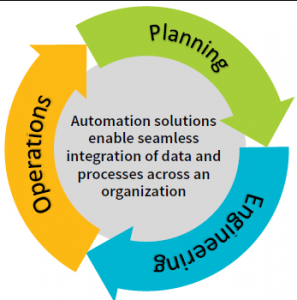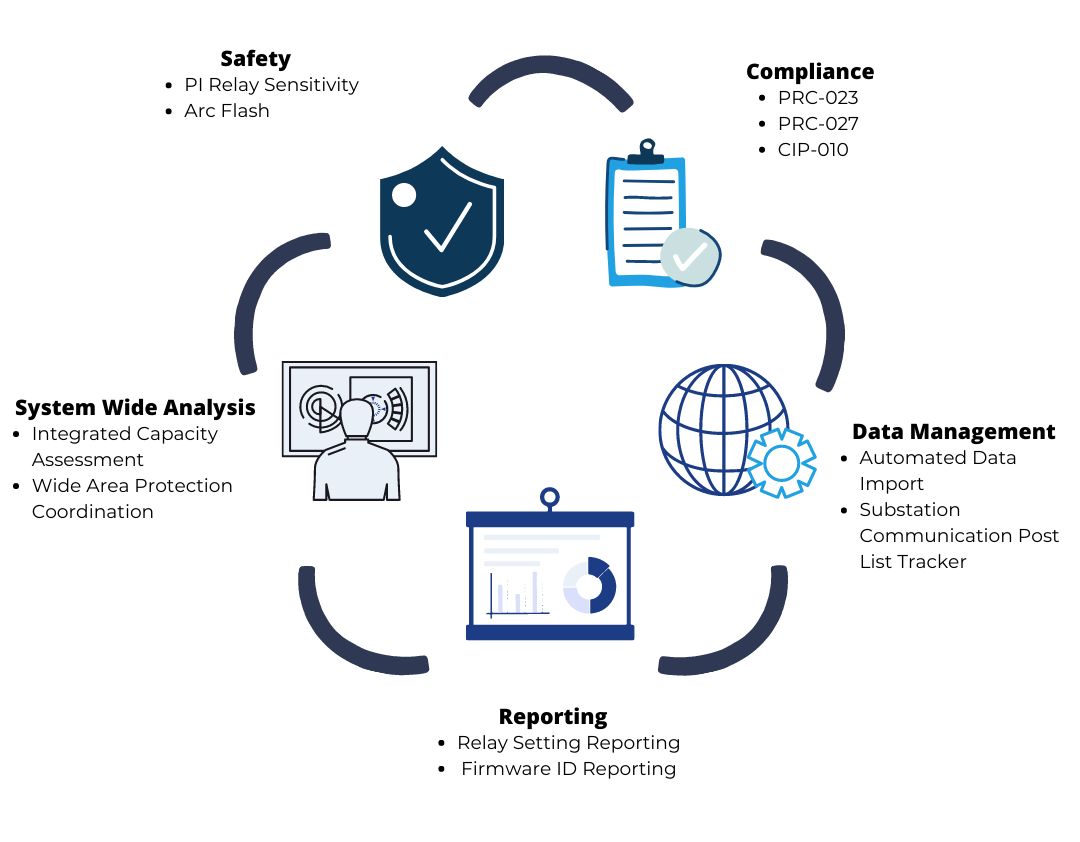Project Reference: San Diego Gas & Electric – Digital Transformation for Protection and Control
Engineering Automation and Integrated Data Management Processes for Protection and Control
The modern power systems industry has increasingly turned to the digital software-based solutions to address the challenges brought on by emerging new technologies, increased regulatory requirements, and an aging workforce. While digitization of data and processes is a promising approach for utilities facing these challenges, a holistic view towards data management and process integration is required to avoid application incompatibilities and data silos.
San Diego Gas & Electric® Company (SDG&E®) is an organization at the forefront of this digital transformation paradigm shift. Over the past five years, Quanta Technology as worked closely in partnership with SDG&E’s System Protection Automation and Control Engineering (SPACE) department to develop and deploy software-based solutions to assist engineers in their day-to-day and long-term responsibilities, including applications in large-scale analysis, compliance evaluation, reporting and documentation, and safety and fire mitigation.
Central to the progression of the five-year program at SDG&E was the utilization of two concepts that can offer significant benefits to data and applications processes in terms of efficiency, effectiveness, and resource management:
- Automation – For tasks that are predictable or repetitive, software-based scripts and programs were used to perform modeling, analysis, processing, and reporting efforts. This automation was particularly well-suited for repetitive functions with a clearly defined scope and boundaries.
- Integration – In conjunction with the automatic completion of repetitive tasks, the Extract, Transform, Load (ETL) approach to data processing was applied to the integration of disparate data sources, enabling smooth and seamless flow of data from one repository to another. This integration can open doors to new capabilities, as data that were once the domain of one aspect of the organization could now be easily transferred to other applications.
Employment of both these techniques within the SDG&E program enabled the SPACE department to tie together previously disparate sources and processes, enabling more seamless transfer of data between the relay settings repository, asset management databases, short-circuit models, and field data historians.

Implementation Strategy
The overall approach and strategy in implementing this program has been one of incremental improvements. Although the implementation of individual solutions may have been based on the priority of needs of the SPACE department, the supporting technical infrastructure for every initiative was developed with consideration for a long-term vision of total data and process integration. The journey to realize this vision involved stages for data preparation, implementation, and governance to build consistent and maintainable data management processes to be used at SDG&E. Finally, this incremental approach enabled engineers to become accustomed to automation-based solutions and to gain a greater understanding of the requirements and benefits in their use.

Outcome
The partnership between Quanta Technology and SDG&E’s SPACE team has driven improvements in nearly every aspect of the department’s tasks and responsibilities. Throughout the process improvement program, each individual solution was considered with respect to its role and placement within a long-term vision for a more responsive and effective SPACE department.
Although this program was implemented for a Protection and Control department, the automation and data management concepts utilized in this effort can be expanded to other departments throughout the utility, enabling seamless flow of data between Engineering, Planning and Operations business units. Data system and process integration even provide a feasible path for the utilization of real-time data monitoring in utility analysis and operations, enabling proactive decision-making based on changing system conditions rather than reacting to fixed historical data. The benefits and opportunities enabled by the digital transformation program implemented at SDG&E have assisted the SPACE team in meeting their responsibilities today and serve as a compelling approach to addressing the coming challenges of the 21st Century.
To find out more about this collaboration with SDG&E, please see our joint article:
“Engineering Automation Drives Decision Making” Published in T&D World Magazine, December 2020
Or contact us directly at: [email protected]


Engineering Automation initiatives addressed in this program:
- Compliance and Regulatory – NERC PRC-023 Evaluation: Compliance tool providing fast and consistent on-demand automation-assisted evaluation and reporting of PRC-023 requirements on both individual device and system-wide basis. This tool directly connects to the PowerBase relay settings repository to obtain relay settings data, interprets the active settings to determine applicable elements, and outputs the evaluation results in comprehensive audit-ready reports and summaries.
- Responsive Reporting – “Reader’s Digest” Protection Settings Summaries: Reporting tool providing comprehensive summaries of settings for protection schemes on lines, transformers, buses, breakers, capacitors, and reactors using data obtained directly from the PowerBase relay settings repository. In addition to element setpoints, these summaries can include identification of most limiting values for operators and indication of changes from previous revisions of the settings.
- Data Governance – Data Migration for Relay Settings Repository: Implementation of migration effort of legacy data into the PowerBase relay settings repository. Aspects of this migration included: settings digitization and conversion, data alignment, verification of the completeness of records, and data standardization.
- Power System Modeling – Protection Modeling in Short-Circuit Software: Modeling tool enabling the creation of simulation-ready protection representation in short-circuit software. This tool seamlessly connects to both the PowerBase relay settings repository and the ASPEN OneLiner short-circuit model, serving as a bridge to obtain relay data, interpret the settings to identify valid tripping elements, and pushing the data into OneLiner while creating the components to immediately simulate relay responses to system events.
- Safety – PPE Equipment Evaluation for Arc Flash: Safety-focused tool enabling efficient and reliable evaluation of the suitability of more than 2000 applicable protection devices to respond to arc flash events in the system. This tool, connecting to the PowerBase relay settings repository, enabled SDG&E engineers to quickly pinpoint circuits and equipment that may require additional consideration for personnel safety.
- Reliability and Optimization – Relay Sensitivity Analysis: Analysis tool enabling the SPACE department to evaluate the suitability of relay sensitivity for feeder loading conditions as a proactive measure for SDG&E’s fire mitigation strategy. During this process, hourly distribution feeder load data is obtained directly from near-real-time sources and compared against applicable relay settings in the PowerBase settings repository.
